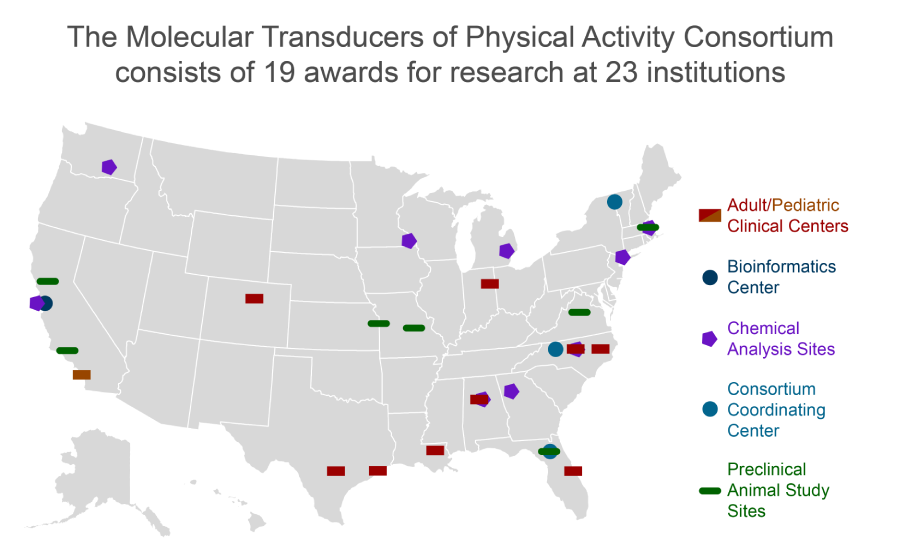Health Relevance
The Common Fund’s Molecular Transducers of Physical Activity program is currently underway. Although hundreds of studies show that physical activity provides benefit to virtually every aspect of health, the molecular mechanisms underlying these benefits are poorly understood. The Common Fund is in a unique position to be able to bring together scientists from diverse fields (exercise physiology, genetics, biochemistry, and computation biology) that will be required to discover and interpret the changes that occur in people in response to exercise. The consortium has developed and implemented protocols for pilot studies to determine the molecular mechanisms of how physical activity benefits human health. Over the course of the program, roughly 2,700 participants across the country from diverse cultural and ethnic backgrounds with varying degrees of physical activity will participate in the study to generate a molecular map of changes that occur with physical activity. The data collected will be supplemented by studies in a rodent model (close to completion), allowing for exploration of molecular changes in tissues not accessible in human participants. The resulting molecular map will be available for researchers to explore, permitting them to study their target of interest in relation to the benefits of physical activity. In the future, this knowledge should allow researchers and doctors to develop individually targeted exercise recommendations, as well as provide insights into the development of therapeutics for those unable to exercise.
NIH Director Dr. Collins Discusses The Physical Activity Program
What May We Find Out?
A goal of the Molecular Transducers of Physical Activity in Humans Program is to identify how the molecules within our bodies change following physical activity. Researchers across the country can then use this information to better understand how physical activity can benefit our health. By moving your mouse over the yellow circles you can see some questions that may be addressed through this research. The Clinical Centers will recruit participants for an exercise program as part of the study.

How To Get Involved
Not sure about participating? Listen to Astronaut Dr. Peggy Whitson, NIH Director Dr. Francis Collins and MoTrPAC representatives explain more about the program and the importance of joining the study.
Are you interested in participating in the MoTrPAC study? The map below shows the location for all of the involved centers. You can follow us @NIH_CommonFund for announcements on general recruitment or check back with the MoTrPAC website: https://www.motrpac.org/join/volunteerHome.cfm.



